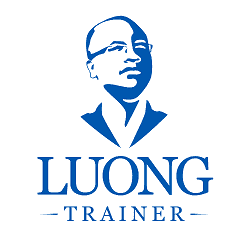Mục lục
Also, knowing about unpaid dividends clues people into whether they might expect delays or reductions in their own future dividend payments. If preferred shareholders want to invest in the preferred stocks, they need to look at the prospectus. If you are a preferred stockholder, you can perform the same calculation for your own position. Instead of multiplying the dividend per share by the total shares as in the first step of the calculation, multiply it by the number of shares you own. You can then find the total amount of money the company owes you and use that amount in your financial planning.
Risk Factor of Cumulative Preferred Stock
Their expected returns on investment shrink, making their shares less appealing. This can turn away potential buyers who seek reliable income from their investments. But there’s a catch – these dividends are often set up as cumulative, meaning if a company can’t pay one year, they must make it up later.
Common features of preferred dividend
The shares can be sold on an exchange, like common stock, but the typical owner of preferred shares is in it for the income supplement. If a company has dividends in arrears, it usually means it has failed to generate enough cash to pay the dividends it owes preferred shareholders. However, they don’t receive as much of a guarantee like creditors do.
Get in Touch With a Financial Advisor
- Your information is kept secure and not shared unless you specify.
- The expectation is that the company will resume making dividend payments when it’s able.
- 25,000 shares of $3 non-cumulative preferred stock and 100,000 shares of common stock.
- Cumulative preference share helps the company raise funds, and it is a financial instrument because it carries the nature of equity and debt.
An amount on a loan, cumulative preferred stock or any credit instrument that is overdue. At this point you have learned all of the accounts and calculated amounts that are shown below on the income statement, retained earnings statement, and balance sheet. Understanding what these accounts are and how their balances are determined provides you with a sound foundation for learning managerial accounting concepts.
The prospectus will state the annual dividend payment in the offering summary. You can also find more information on things such as liquidity preference and the use of proceeds (assuming you’re able to keep your eyes open long enough to read it). It benefits the investors because they will get a fixed dividend and preference over ordinary shareholders. Sometimes it will be delayed if the company does not have sufficient cash, and they will also not get any interest in the delayed payment of dividends. Holders of common stock have an ownership stake in the issuing company.
But it must be disclosed under notes to accounts on the balance sheet. You can obtain this report online from the investor relations section of a company’s website, or from the U.S. There are some other differences between common and preferred shares.
Dividends in arrears happen when a company can’t pay out its promised dividends on time. They build up as unpaid amounts that the company owes to its shareholders, especially those with preferred shares. In some cases, companies pay dividends to all of their shareholders. Preferred stock is an asset that falls between bonds and common stock. This is because, like bonds, a preference share has a guaranteed interest payment.
Non-cumulative preferred stock loses its rights to any payment if it isn’t claimed. Preferred stock gives the investor a higher claim in liquidation, while preference shares provide the same claims as common stockholders. In this case, the second threshold was exceeded and the excess was shared on the basis of total par values (one-fourth to preferred stockholders, three-fourths to common stockholders). Dividends in arrears are unpaid dividends owed to shareholders of preferred stock. For them, cumulative preferred stocks can be less risky and more rewarding even when times are tough for the business.
As a result, these payments are recorded as a current liability on the company’s balance sheet until they are disbursed. In year three, preferred stockholders must receive $75,000 before common shareholders receive anything. Since only how to calculate dividends in arrears $60,000 is declared, preferred stockholders receive it all. In year two, preferred stockholders must receive $75,000 before common shareholders receive anything. Since only $20,000 is declared, preferred stockholders receive it all.
In the example, assume the company missed two years of dividend payments. Preferred share dividends, like bond rates, are largely influenced by the interest rates set by the Federal Reserve at the time they are issued. Companies that issue callable shares retain the option to repurchase existing preferred shares and reissue them with a lower dividend rate when interest rates fall. Companies have the option of issuing non-cumulative dividends, meaning that shareholders do not have a claim on any dividends left unpaid due to a drop in profits. With the launch of a revolutionary new product, ABC finally sees its profits pick up. However, given the size of its pressing financial obligations, it is still unable to pay its preferred dividends.
